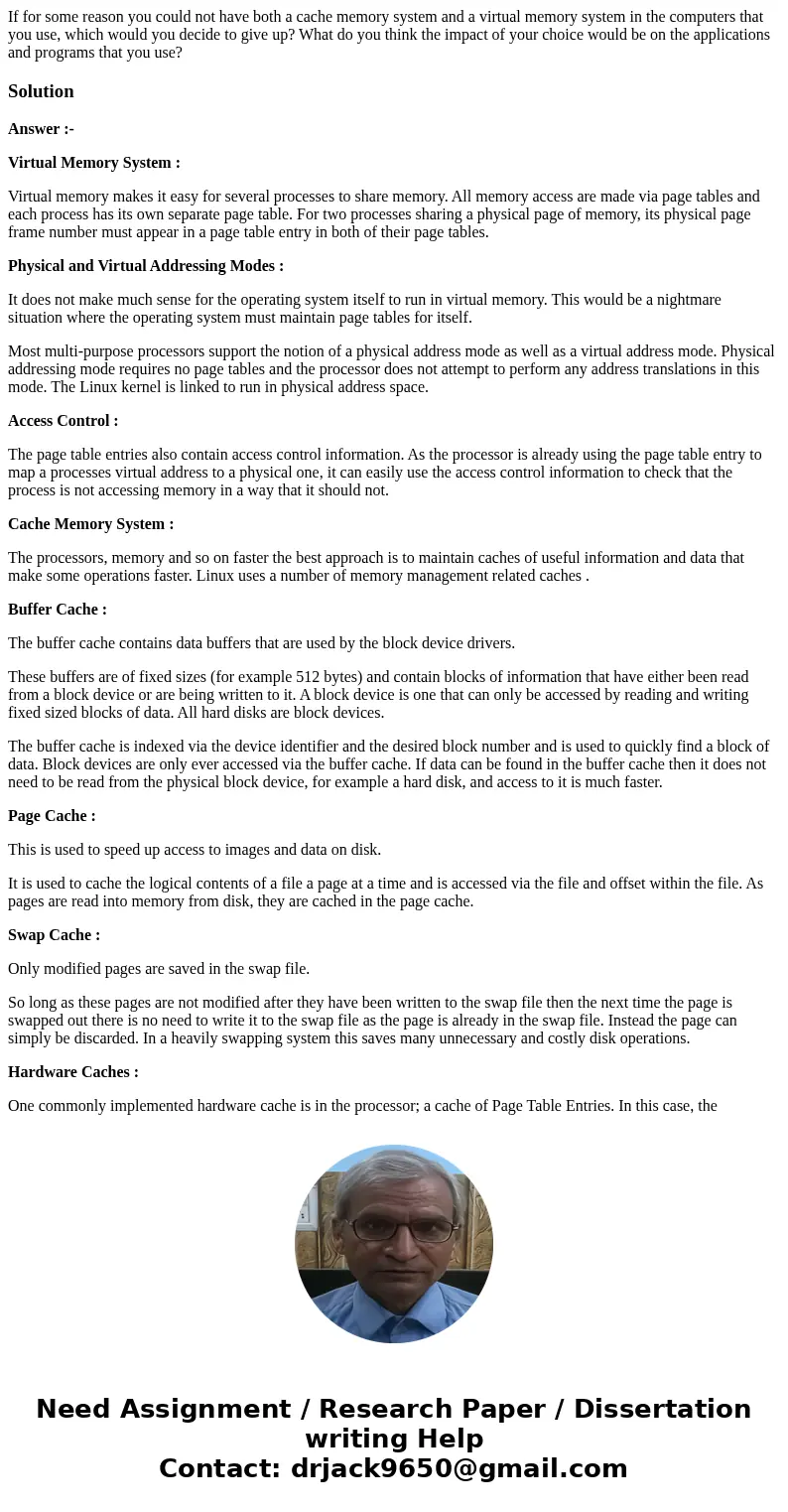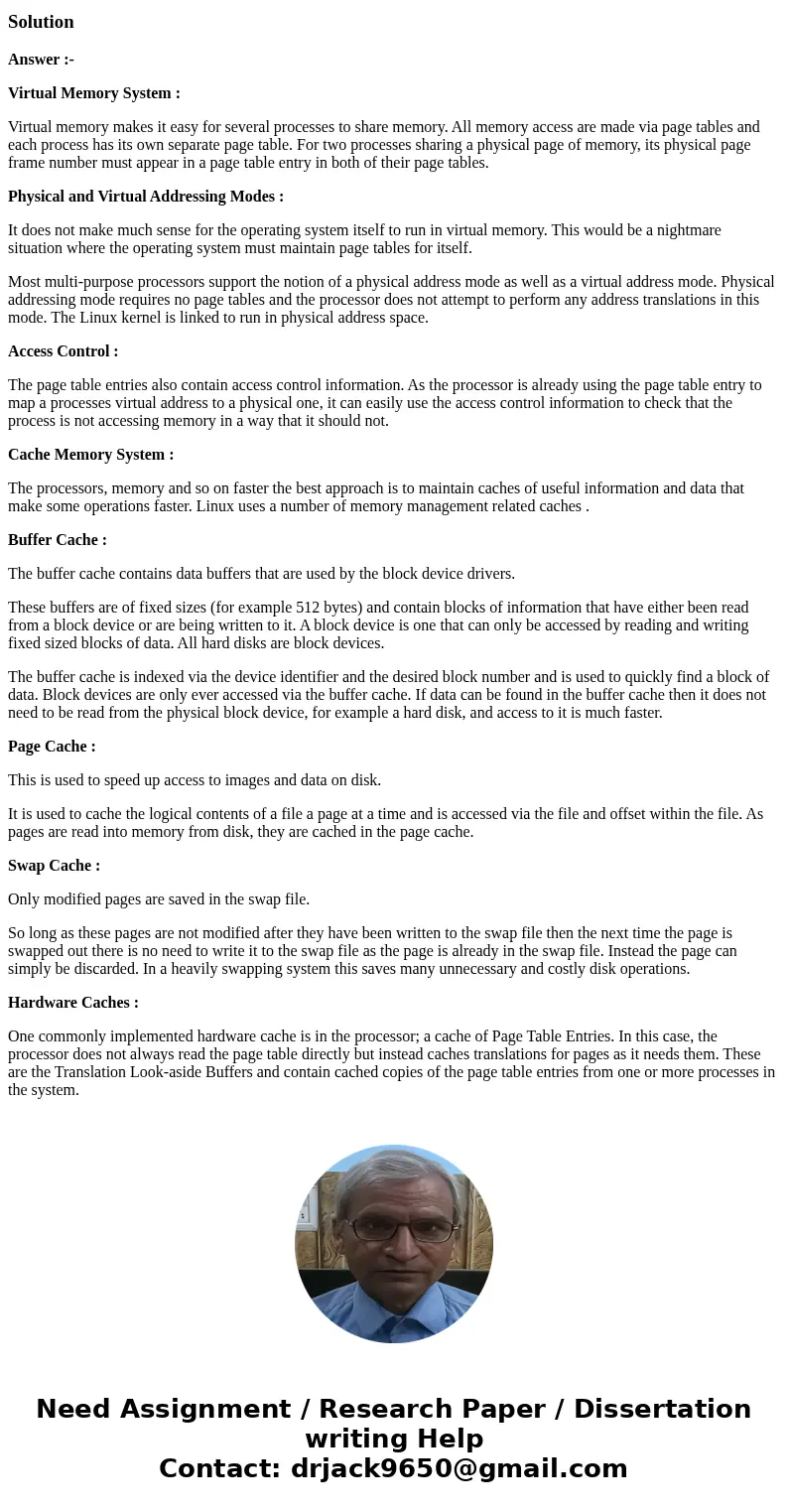If for some reason you could not have both a cache memory sy
If for some reason you could not have both a cache memory system and a virtual memory system in the computers that you use, which would you decide to give up? What do you think the impact of your choice would be on the applications and programs that you use?
Solution
Answer :-
Virtual Memory System :
Virtual memory makes it easy for several processes to share memory. All memory access are made via page tables and each process has its own separate page table. For two processes sharing a physical page of memory, its physical page frame number must appear in a page table entry in both of their page tables.
Physical and Virtual Addressing Modes :
It does not make much sense for the operating system itself to run in virtual memory. This would be a nightmare situation where the operating system must maintain page tables for itself.
Most multi-purpose processors support the notion of a physical address mode as well as a virtual address mode. Physical addressing mode requires no page tables and the processor does not attempt to perform any address translations in this mode. The Linux kernel is linked to run in physical address space.
Access Control :
The page table entries also contain access control information. As the processor is already using the page table entry to map a processes virtual address to a physical one, it can easily use the access control information to check that the process is not accessing memory in a way that it should not.
Cache Memory System :
The processors, memory and so on faster the best approach is to maintain caches of useful information and data that make some operations faster. Linux uses a number of memory management related caches .
Buffer Cache :
The buffer cache contains data buffers that are used by the block device drivers.
These buffers are of fixed sizes (for example 512 bytes) and contain blocks of information that have either been read from a block device or are being written to it. A block device is one that can only be accessed by reading and writing fixed sized blocks of data. All hard disks are block devices.
The buffer cache is indexed via the device identifier and the desired block number and is used to quickly find a block of data. Block devices are only ever accessed via the buffer cache. If data can be found in the buffer cache then it does not need to be read from the physical block device, for example a hard disk, and access to it is much faster.
Page Cache :
This is used to speed up access to images and data on disk.
It is used to cache the logical contents of a file a page at a time and is accessed via the file and offset within the file. As pages are read into memory from disk, they are cached in the page cache.
Swap Cache :
Only modified pages are saved in the swap file.
So long as these pages are not modified after they have been written to the swap file then the next time the page is swapped out there is no need to write it to the swap file as the page is already in the swap file. Instead the page can simply be discarded. In a heavily swapping system this saves many unnecessary and costly disk operations.
Hardware Caches :
One commonly implemented hardware cache is in the processor; a cache of Page Table Entries. In this case, the processor does not always read the page table directly but instead caches translations for pages as it needs them. These are the Translation Look-aside Buffers and contain cached copies of the page table entries from one or more processes in the system.


 Homework Sourse
Homework Sourse